Dealing with Doctors, Denial, and Death
Dealing with Doctors, Denial, and Death
A Guide to Living Well with Serious Illness
Aroop Mangalik, md
ROWMAN & LITTLEFIELD
Lanham Boulder New York London
Published by Rowman & Littlefield
A wholly owned subsidiary of The Rowman & Littlefield Publishing Group, Inc.
4501 Forbes Boulevard, Suite 200, Lanham, Maryland 20706
www.rowman.com
Unit A, Whitacre Mews, 26-34 Stannary Street, London SE11 4AB
Copyright 2017 by Rowman & Littlefield
All rights reserved . No part of this book may be reproduced in any form or by any electronic or mechanical means, including information storage and retrieval systems, without written permission from the publisher, except by a reviewer who may quote passages in a review.
British Library Cataloguing in Publication Information Available
Library of Congress Cataloging-in-Publication Data
Names: Mangalik, Aroop, 1935 author.
Title: Dealing with doctors, denial, and death : a guide to living well with serious illness / Aroop Mangalik.
Description: Lanham, Maryland : Rowman & Littlefield, [2017] | Includes bibliographical references and index.
Identifiers: LCCN 2016025054 (print) | LCCN 2016033078 (ebook) | ISBN 9781442272804 (cloth : alk. paper) | ISBN 9781442272811 (electronic)
Subjects: LCSH: Chronically illCare. | Chronically illFamily relationships. | Chronically illTreatment. | Physician and patient. | Medical ethics.
Classification: LCC RC108 .M366 2017 (print) | LCC RC108 (ebook) | DDC 616/.044dc23
LC record available at https://lccn.loc.gov/2016025054
 The paper used in this publication meets the minimum requirements of American National Standard for Information SciencesPermanence of Paper for Printed Library Materials, ANSI/NISO Z39.48-1992.
The paper used in this publication meets the minimum requirements of American National Standard for Information SciencesPermanence of Paper for Printed Library Materials, ANSI/NISO Z39.48-1992.
Printed in the United States of America
This book is dedicated to John (Jack) H. Saiki, friend and inspiration
The dimensions of illness extend far beyond the symptoms and physical signs to include the far reaching impact on mind and spirit. We are trained with an emphasis on the biology of disease and its treatment. To the patient and family, the meaning and impact of serious illness is the more significant problem. This other side of illness I learned from my patients.
John H. Saiki, MD, 2011
Disclaimer:
This book represents reference material only. It is not intended as a medical manual, and the data presented here are meant to assist the reader in making informed choices. This book is not a replacement for treatment(s) that the readers personal physician may have suggested. If the reader believes he or she is experiencing a medical issue, professional medical help is recommended. Mention of particular products, companies, or authorities in this book does not indicate endorsement by the publisher or author.
Contents
The importance of the problem of pain before one dies is becoming increasingly recognized around the world. With advancing technology and more medical expertise, there is hope for successful treatment of many diseases that were once almost invariably fatal. At the same time, these technologies are causing a prolongation of the process of dyingoften painfully.
The word pain most often conjures up the agony of a broken bone, a burn or a severe muscle spasm. In this book, however, I will use pain to refer to any seriously distressing symptom, including the pressure of a tumor, shortness of breath and even guilt at burdening ones loved ones.
No one wants to suffer needlessly; yet this is happening. The question I ask is Why do we choose to suffer? This book gives an analysis of the background and reasons for this paradox. It also provides guidance for patients and their families on how to avoid unnecessary suffering. I often use the second personyouto refer to the seriously ill patient. I do this not because I assume that everyone who reads this book is currently very sick but to put the reader into the frame of mind to think about what he or she would want when faced with a life-threatening illness and, ultimately, death. True, some people die immediately from trauma (being hit by the proverbial bus) or from a sudden event like a heart attack or stroke. But nowadays most Americans die as a result of progressive illness that is partially treatable. This gives them time to make choices about the treatment and care they wantand do not wantat the end of life. The best time to ask yourself what you do, and dont, want is when you are in good health, but whether you are currently healthy or ill, giving consideration to this issue, and discussing it with your doctors and loved ones, will prepare you and your family for you to have a comfortable, peaceful death.
Having worked for 50 years as a hematologist-oncologist, I have interacted with many patients with blood diseases and cancer. In some cases, my patients had good results; in others, the outcome was not so good. Although I tried to minimize the discomfort of my patients, some did die painfully. I have worked in India and in the United States, and during my annual visits to India, I have heard many stories of people who died after prolonged suffering.
After many years of delay, the topic of comfort at death is receiving more attention. Two recent books have drawn attention to this issue. They are insightful and well written, and I cite them often in the chapters that follow. One is by a journalist, Katy Butler ( Knocking on Heavens Door ), and the other by an Indian-American physician, Atul Gawande ( Being Mortal ). Both authors describe the many problems in the American medical system and some ways to correct them.
Butlers work is about her elderly fathers mental deterioration and both of her parents frailty. She describes how they suffered for many years and were not able to die in peace. Gawandes book also describes his fathers illness and suffering in the later years of life. In addition, Gawande looks at the problems that arise with aging and how to cope with them.
The present book goes further into the analysis of the role of the medical establishment (defined broadly) and of doctors in contributing to physical and emotional pain of people as they age, get sick and approach death. In the pages that follow, you will learn about the psychology, education and training of physicians, along with the professional and cultural environment in which they work. These often lead to their subjecting patients to tests and procedures that have little, if any, chance of benefiting their patients. This book also offers suggestion of what you, as a patient, can do to avoid this over-treatment.
This book is written primarily for people who are interested in taking charge of their lives and their deaths. Whether you are currently ill or in the best of health, it should help you in making your own choices about a crucial issue and making sure your wishes are carried out.
Our mother was very sick. My older sister was 10 years old. She went to visit Amma in the hospital but was not allowed to go into the room. She was then sent to boarding school. When she came back for the holidays, she asked, Where is Amma? Of course, Amma had died, but no one had told Meera about it.
Different cultures, different families and different individuals respond to death in their own ways. Understanding or even having some knowledge about the reactions to death and its inevitability is helpful. When we face the end directly, that understanding facilitates the process of dealing with the anguish, regrets and what ifs of death.
As outsiders, we must be sensitive to other peoples reactions to death, which is too personal for us to judge. Many social and circumstantial factors come into play. The following two anecdotes illustrate why we should not judge other cultures and the circumstances that lead to the reactions or practices they have.
Next page

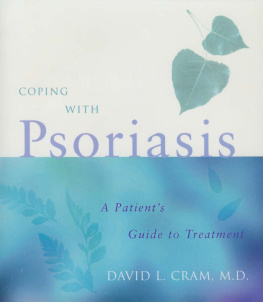
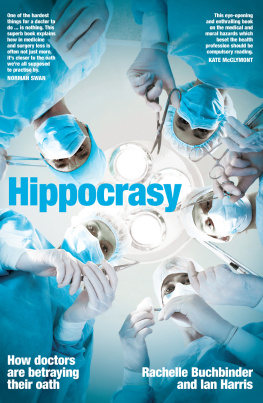
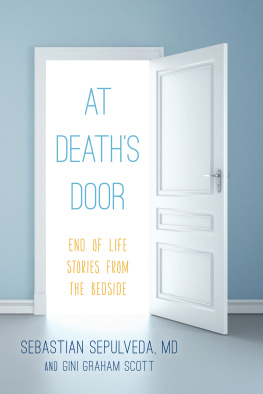
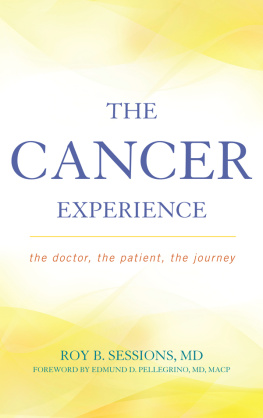
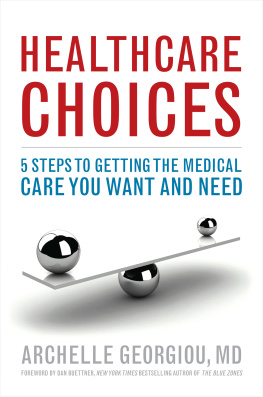

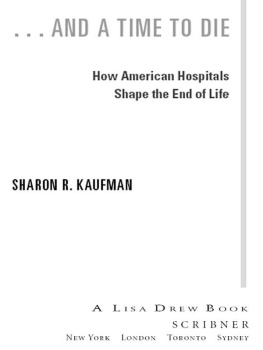
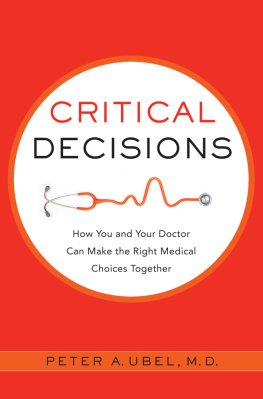
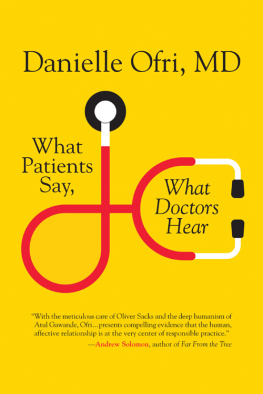


 The paper used in this publication meets the minimum requirements of American National Standard for Information SciencesPermanence of Paper for Printed Library Materials, ANSI/NISO Z39.48-1992.
The paper used in this publication meets the minimum requirements of American National Standard for Information SciencesPermanence of Paper for Printed Library Materials, ANSI/NISO Z39.48-1992.